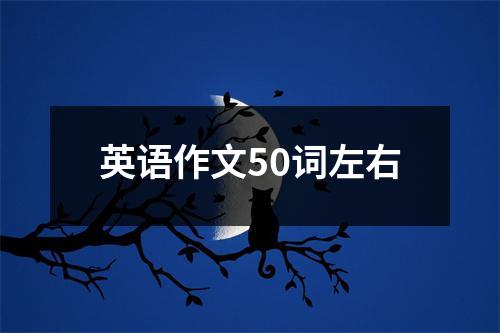六级冲刺练习阅读(69)

Informing the World
Every day, the news of the world is relayed to people by over 300 million copies of daily papers, over 400 million radio sets, and over 150 million television sets. Additional news is shown by motion pictures, in theatres and cinemas all over the world. As more people learn what the important events of the day are, fewer are still concerned exclusively with the events of their own household. As the English writer John Donne put it nearly four hundred years ago, no man is an island. This idea is more appropriate today than it was when Donne lived. In short, wherever he lives, a man belongs to some society; and we are becoming more and more aware that whatever happens in one particular society affects, somehow, the life and destiny of all humanity.
Newspapers have been published in the modern world for about four hundred years. Most of the newspapers printed today are read in Europe and North America. However, soon they may be read in all parts of the world, thanks to the new inventions that are changing the techniques of newspaper publishing.
Electronics and automation have made it possible to produce pictures and text far more quickly than before. Photographic reproduction eliminates the need for type and printing presses. And fewer specialists, such as type-setters, are needed to produce a paper or magazine by the photo-offset method. Therefore, the publishing of newspapers and magazines becomes more economical. Furthermore, photo-copies can be sent over great distances now by means of television channels and satellites such as Telstar. Thus, pictures can be brought to the public more quickly than previously.
Machines that prepare printed texts for photo-copies are being used a great deal today. Thousands of letters and figures of different sizes and thicknesses can now be arranged on a black glass disc that is only eight inches in diameter, to be printed in negative form. The disc on the machine turns constantly at the rate of ten revolutions a second. A beam of light from a slroboscopic lamp shines on the desired letters and figures for about I wo-millionths of a second. Then the image of the letters and figures that were illuminated is projected onto a film through lenses. The section of film is large enough to hold the equivalent of a page of text. There is a keyboard in front of the machine that is similar to the keyboard of a typewriter, and the machine operator has only to strike the proper keys for the image of the corresponding letters to be immediately transferred to the film. The negative image on the film can quickly be transferred onto paper. This method makes it as easy to reproduce photographs and illustrations as it is to reproduce the text itself.
Film, being light and small, can be sent rapidly to other places and used to print copies of the text where they are needed. Film images can also be projected easily on a movie or television screen. Television broadcasts are limited to an area that is within sight of the sending station or its relay . Although television relays are often placed on hills and mountains so that they can cover a wider region, they still can not cover more land than one could see from the same hilltop on a clear day. However, the rays also go out into the atmosphere, and if there is a relay station on a satellite that revolves around the earth, it can transmit the pictures to any point on the earth from which the satellite is visible. Three satellites permanently revolving over the equator transmit any television program to any part of the earth. This makes it possible for world editions of newspapers to give the news in all countries at the same time. Some day it may be possible for a subscriber to a televised newspaper to press a button and see a newspaper page on his television screen. He could also decide when he wants the page to turn, and, by dialling different numbers such as those on a telephone dial, he could choose the language or the edition of the paper he wants to read. It seems strange to think that, even today, methods of the past are not entirely useless. For example, sometimes press agencies that use radio and Telstar use carrier pigeons to send messages between offices in large cities because the pigeons are not bothered by traffic problems.
Informing the World
Every day, the news of the world is relayed to people by over 300 million copies of daily papers, over 400 million radio sets, and over 150 million television sets. Additional news is shown by motion pictures, in theatres and cinemas all over the world. As more people learn what the important events of the day are, fewer are still concerned exclusively with the events of their own household. As the English writer John Donne put it nearly four hundred years ago, no man is an island. This idea is more appropriate today than it was when Donne lived. In short, wherever he lives, a man belongs to some society; and we are becoming more and more aware that whatever happens in one particular society affects, somehow, the life and destiny of all humanity.
Newspapers have been published in the modern world for about four hundred years. Most of the newspapers printed today are read in Europe and North America. However, soon they may be read in all parts of the world, thanks to the new inventions that are changing the techniques of newspaper publishing.
Electronics and automation have made it possible to produce pictures and text far more quickly than before. Photographic reproduction eliminates the need for type and printing presses. And fewer specialists, such as type-setters, are needed to produce a paper or magazine by the photo-offset method. Therefore, the publishing of newspapers and magazines becomes more economical. Furthermore, photo-copies can be sent over great distances now by means of television channels and satellites such as Telstar. Thus, pictures can be brought to the public more quickly than previously.
Machines that prepare printed texts for photo-copies are being used a great deal today. Thousands of letters and figures of different sizes and thicknesses can now be arranged on a black glass disc that is only eight inches in diameter, to be printed in negative form. The disc on the machine turns constantly at the rate of ten revolutions a second. A beam of light from a slroboscopic lamp shines on the desired letters and figures for about I wo-millionths of a second. Then the image of the letters and figures that were illuminated is projected onto a film through lenses. The section of film is large enough to hold the equivalent of a page of text. There is a keyboard in front of the machine that is similar to the keyboard of a typewriter, and the machine operator has only to strike the proper keys for the image of the corresponding letters to be immediately transferred to the film. The negative image on the film can quickly be transferred onto paper. This method makes it as easy to reproduce photographs and illustrations as it is to reproduce the text itself.
Film, being light and small, can be sent rapidly to other places and used to print copies of the text where they are needed. Film images can also be projected easily on a movie or television screen. Television broadcasts are limited to an area that is within sight of the sending station or its relay . Although television relays are often placed on hills and mountains so that they can cover a wider region, they still can not cover more land than one could see from the same hilltop on a clear day. However, the rays also go out into the atmosphere, and if there is a relay station on a satellite that revolves around the earth, it can transmit the pictures to any point on the earth from which the satellite is visible. Three satellites permanently revolving over the equator transmit any television program to any part of the earth. This makes it possible for world editions of newspapers to give the news in all countries at the same time. Some day it may be possible for a subscriber to a televised newspaper to press a button and see a newspaper page on his television screen. He could also decide when he wants the page to turn, and, by dialling different numbers such as those on a telephone dial, he could choose the language or the edition of the paper he wants to read. It seems strange to think that, even today, methods of the past are not entirely useless. For example, sometimes press agencies that use radio and Telstar use carrier pigeons to send messages between offices in large cities because the pigeons are not bothered by traffic problems.









